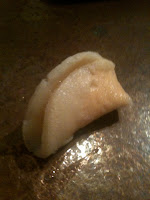2. Delmonte Diced Tomatoes- Calcium Chloride-
3. Cambell's Chicken Noodle Soup- Sodium Phosphate-
4. Progresso Chicken and Dumplings- Potassium Chloride- KCl
5.Flinstones Sour Gummies- Potassium Iodide- KI
6. Ibuprofen- Iron (II) Oxide- FeO
7. Science Diet Dog Food - Copper (II) Sulfate-
8.Oreo's- Calcium Phosphate-
9. Innergize Sports Drink- Sodium Chloride- NaCl
10. Wheaties- Calcium Carbonate-
11.Old Spice Body Wash- Sodium Sulfate- 12.Premium Dog Food, Chicken- Zinc Oxide- ZnO
13. Crest Toothpaste- Sodium Fluoride- NaF
14. Theraflu- Calcium Phosphate-
15. Clorox Bleach- Hydrogen Peroxide-
16. Water- Hydrogen Oxide-
17. Fire Extinguisher- Ammonium Sulfate-
18. Power Bar- Potassium Phosphate-
19. Tropicana Orange Juice- Calcium Hydroxide-
20. Craft Macaroni and Cheese- Iron (II) Sulfate-







